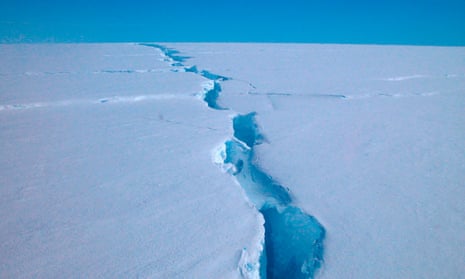Australia will push for a million square kilometres of the Antarctic ocean to be protected as a marine sanctuary at an international forum in Hobart this week.
Bids to preserve a large area of pristine ocean off east Antarctica have struck opposition in the past, including at last year’s meeting of the Commission for the Conservation of Antarctic Marine Living Resources, where China and Russia played a part in blocking the proposal.
Australia is co-sponsoring the proposal for an East Antarctic Marine Protected Area, along with the European Union, and will resubmit it at this year’s CCAMLR meeting. The organisation’s membership includes 25 nations and the EU.
The plan requires the support of all members for it to proceed.
The environment minister, Sussan Ley, said the decision to pursue the sanctuary “underlines our commitment to protecting the Antarctic and Southern Ocean”.
Gillian Slocum, the leader of Australia’s delegation to the CCAMLR, said the proposal would protect reefs and safeguard several marine species.
“When established, the East Antarctic MPA will protect distinctive deep-water reefs and feeding areas for marine mammals, penguins and other seabirds,” she said.
The Australian Antarctic Division said the proposed sanctuary would also provide scientific reference zones to help researchers understand the effects of fishing outside protected areas and the consequences of climate change for Southern Ocean ecosystems.
The Australian Antarctic explorer and adventurer Tim Jarvis has called on member countries to support the plan, warning that climate change and the threat of industrial fishing were putting pressure “on this incredible place”.
“If you don’t protect those resources, you risk disrupting the whole global food web in the ocean,” he said. “You’re not going to head off climate change but you’re going to make them more resilient to it.
“If it could all be protected, that would be fantastic but if we could get this million square kilometres it would be a huge step in the right direction.”
But he added that most of the changes necessary to protect Antarctica and its marine life needed to be through a collective global effort to cut carbon pollution and limit global heating.
“You want to protect Antarctica, we need to change the way we do things back in the rest of the world ... in the cities where 75% of us live, where we consume the energy that contributes to the CO2 emissions,” he said.
Australian Associated Press contributed to this report
